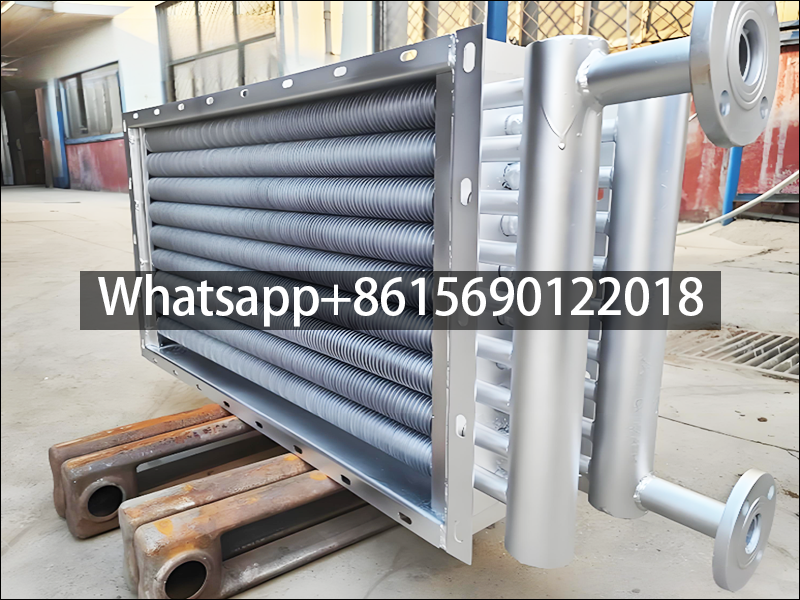Finned Tube Heat Exchanger

Finned Tube Heat Exchanger: Universal Equipment for Efficient Heat Exchange
Finned tube heat exchanger achieves efficient energy transfer by expanding the heat transfer area. Its core finned tube can increase the heat exchange capacity by 2-5 times. It has both high efficiency, adaptability and cost advantages. It is a key equipment in the fields of HVAC, electricity, chemical industry, etc. Reasonable maintenance can extend the service life to 10-15 years.
Finned tube heat exchanger is a universal equipment that improves heat exchange efficiency by expanding the heat transfer area. It is widely used in energy, chemical industry, HVAC and other fields.
It uses finned tubes as the core heat exchange element, and realizes efficient energy transfer through heat exchange between the medium inside and outside the tube. It is an indispensable key equipment in industrial production and livelihood projects.
From a structural point of view, the finned tube heat exchanger consists of finned tubes, shells (or frames), inlet and outlet pipes and auxiliary components.
The core finned tube is composed of a base tube and fins: the base tube is mostly made of metal pipes, such as steel pipes, stainless steel pipes, copper pipes, etc., which are selected according to the characteristics of the medium and are responsible for conveying the fluid in the tube; the fins are metal sheets attached to the outer wall of the base tube, made of aluminum, copper, steel, etc., and combined with the base tube through winding, rolling, welding and other processes, so that the heat exchange area is expanded by 3-10 times compared with the bare tube. The shell or frame plays the role of fixing the finned tube and guiding the flow of the fluid outside the tube. Some equipment is also equipped with a guide plate to optimize the fluid distribution and reduce the dead zone.
According to the processing technology of finned tubes, they can be divided into many types.
The high-frequency welded finned tube heat exchanger uses high-frequency current to weld the fins to the base tube, with high bonding strength and low thermal resistance, and is suitable for high-temperature and high-pressure scenarios; the steel-aluminum composite finned tube heat exchanger uses rolling to tightly bond the aluminum fins to the steel base tube, combining the pressure resistance of steel with the high thermal conductivity of aluminum, and is often used for medium and low temperature heat exchange; the wound finned tube heat exchanger spirally wraps the metal belt around the base tube, which has low cost and fast production, and is suitable for occasions with low efficiency requirements. Different types of equipment are adapted to different working conditions to meet diverse heat exchange needs.

Its working principle is based on three basic methods of heat transfer:
The heat of the medium in the tube is first transferred to the inner wall of the base tube through convection heat transfer, and then transferred to the outer wall of the base tube and the fins through heat conduction, and finally the fins transfer the heat to the medium outside the tube through convection and radiation.
In this process, the presence of the fins breaks the bottleneck of “small heat exchange area outside the tube”, so that the heat exchange task originally undertaken by the base tube alone is dispersed to the large area of fins, significantly improving the overall heat transfer coefficient. For example, in the air heating system, the heat transfer coefficient of the finned tube heat exchanger can reach 30-100W/(m²・K), which is 2-5 times that of the bare tube heat exchanger.
The performance advantages of the finned tube heat exchanger are very prominent.
The first is high efficiency. By expanding the heat exchange area, its heat exchange capacity far exceeds that of the bare tube heat exchanger under the same volume, which can greatly reduce the size of the equipment and save installation space;
The second is strong adaptability. It can handle a variety of heat exchange conditions such as gas-gas, gas-liquid, and gas-phase change. Liquid or steam can flow inside the tube, and air or other gases can flow outside the tube, and it can withstand certain temperature and pressure fluctuations;
The third is cost controllability. Finned tubes of different processes are matched with different materials, which can balance costs while meeting performance. For example, civil air conditioners mostly use copper-aluminum composite finned tubes, taking into account efficiency and economy.
In the application of various industries, finned tube heat exchangers have performed well.
In the field of HVAC, it is the core component of air conditioning units and radiators, achieving cooling or heating through heat exchange between air and refrigerant; in the power industry, it is used in boiler air preheaters to recover flue gas heat to heat the air required for combustion and reduce fuel consumption; in the chemical industry, it is used to cool reaction gases or heat raw materials in the production of synthetic ammonia and sulfuric acid; in the field of food processing, it can be used as a heater for drying equipment to accurately control air temperature and humidity; in agriculture, finned tube heat exchangers are also often used in the heating system of greenhouses to provide a suitable environment for crop growth.
The maintenance and care of equipment directly affects its service life and efficiency. After long-term operation, the surface of the fins is prone to dust and scaling, resulting in increased heat transfer resistance, and regular cleaning is required: for dust on the air side, compressed air can be used for blowing or high-pressure water guns for flushing; for scale in the tube, chemical cleaning or mechanical descaling can be used.
Check whether the fins are loose and whether the base tube is corroded. If problems are found, repair or replace them in time to avoid affecting the overall performance due to local damage. Reasonable maintenance can extend the service life of the equipment to 10-15 years.
With the development of energy-saving technology, finned tube heat exchangers are constantly upgraded.
The application of new materials such as corrosion-resistant alloys and ceramic coatings enables it to adapt to more severe medium environments; the introduction of numerical simulation technology optimizes the shape and arrangement of fins, further improving heat transfer efficiency; the intelligent online monitoring system can monitor the temperature, pressure and resistance of the equipment in real time, predict faults and automatically adjust operating parameters.
These innovations make finned tube heat exchangers an important tool for improving energy utilization under the “dual carbon” goal, providing strong support for energy conservation and consumption reduction in all walks of life.
